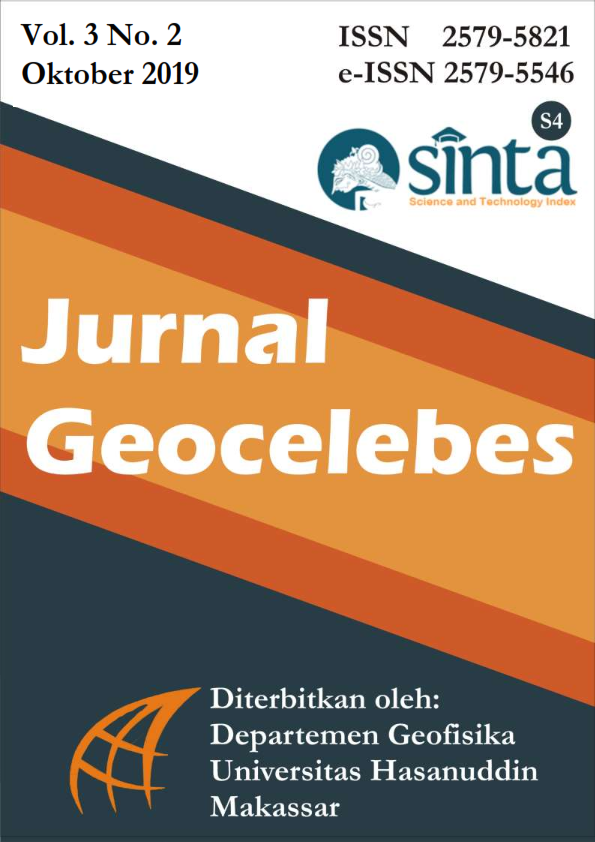INTERPRETASI STRUKTUR PERLAPISAN TANAH MENGGUNAKAN METODE GEOLISTRIK RESISTIVITAS
DOI:
https://doi.org/10.20956/geocelebes.v3i2.7117Abstract
Metode geolistrik resistivitas merupakan salah satu metode geofisika dengan uji tidak merusak (non-destructive test) sifat fisik asli tanah atau batuan. Penginjeksian arus listrik pada permukaan tanah merupakan ciri dari metode ini, yang kemudian diikuti dengan pembacaan beda potensial melalui sepasang elektroda lainnya. Konfigurasi elektroda arus dan potensial dikondisikan berdasarkan konfigurasi Werner-Schlumberger. Akuisisi data diperoleh dari 3 lokasi yang berbeda untuk memperoleh pemahaman tentang struktur bawah permukaan yang lebih baik. Interpretasi terhadap material lapisan tanah dilakukan dengan memanfaatkan penampang resistivitas setelah dilakukan pengolahan data menggunakan software Res2dinv. Hasil yang diperoleh adalah variasi nilai resistivitas dan interpretasi lapisan tanah untuk masing masing lokasi pengambilan data.
References
Kearey, P., Michael, B., Ian, H., 2002. An Introduction to Geophysical Exploration. Blackwell Science Ltd. London.
Loke, M.H,. 2004. Electrical Immaging Surveys for Environmental and Engineering Studies; A Practical Guide to 2-D and 3-D Surveys.
Reynolds, J.M. 1997. An Introduction to Applied and Enviromental Geophysics. NewYork : John Wiley & Sons.
Telford, W. M., Geldart, L. P. and Sheriff, R. E., 1990, “Applied Geophysics, Second Edition“, Cambridge University Press, United State of America.
Wijaya, Lean., 2009. Identifikasi Pencemaran Airtanah dengan Metode Geolistrik Di Wilayah Ngringo Jaten Karanganyar. Jurusan Fisika. Universitas Sebelas Maret. Surakarka.
Downloads
Published
How to Cite
Issue
Section
License
Authors who publish with this journal agree to the following terms:
- Authors retain copyright and grant the journal right of first publication with the work simultaneously licensed under a Creative Commons Attribution License that allows others to share the work with an acknowledgement of the work's authorship and initial publication in this journal.
- Authors are able to enter into separate, additional contractual arrangements for the non-exclusive distribution of the journal's published version of the work (e.g., post it to an institutional repository or publish it in a book), with an acknowledgement of its initial publication in this journal.
- Authors are permitted and encouraged to post their work online (e.g., in institutional repositories or on their website) prior to and during the submission process, as it can lead to productive exchanges, as well as earlier and greater citation of published work (See The Effect of Open Access).





